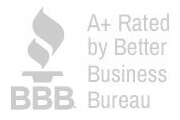What are the Record-Keeping Requirements for a Series LLC?
A Series LLC allows you to take one LLC and break it down into its component parts. One parent LLC has the ability to form an unlimited number of separate, protected series. Each of these protected series is a legal person capable holding assets. Series LLC statutes shield the assets of each protected series from the liabilities of other protected series or the LLC itself.
Forming a Series LLC can be a cost effective way to achieve limited liability protection for multiple businesses using one legal entity. However, there is a catch. The liability protections of protected series are dependent on two conditions being met:
(1) Each protected series must be properly established, and;
(2) Each protected series must keep separate records.
Series LLC statutes have stern record-keeping requirements. Managers must meet these requirements in order to maintain the internal shields between protected series and the parent LLC. A member or manager can incidentally impose cross-liability on sister protected series if they are not diligent about maintaining records.
Here is what you need to know about the record-keeping requirements, including tips for maintaining the firewalls between your Series LLC assets.
Series LLC Record-Keeping Requirements
Series LLC laws clearly outline the conditions for maintaining records of associated assets. The most important condition is that internal records effectively keep the assets of each protected series separate from one another. Records must objectively describe an asset, distinguishing it from those associated with other protected series, or the parent LLC.
Records should determine when and from whom the asset was acquired. Managers should organize assets by specific listing, category, type, quantity, or allocational formula including the percentage shares of an asset associated with a protected series.
“Assets records for a Series LLC should be thorough, but easy to manage.”
Series LLC statutes require asset records to be well detailed. However, it is important that asset records are understandable to an outsider looking in. Many statutes include a threshold for specificity. Records should describe assets in a manner that they could be distinguished by a “disinterested, reasonable individual”.
This may sound vague, however, here is some clarification. The law describes a reasonable individual as having a base understanding of business records. It does not require however that they have familiarity with generally accepted accounting principles. Ideally, it should not take a trained, forensic accountant to distinguish what assets are associated with any protected series.
Consequences of Commingling Assets
Careless managers can incidentally commingle assets across multiple protected series in a Series LLC. This could potentially negate the entity’s internal liability shields, making each protected series vulnerable to attacks by hostile creditors.
Series LLC statutes often consider asset exposure on an “asset by asset” basis. Business assets can fall into a category of being “non-associated” if record-keeping formalities are not met. A non-associated asset is potentially up for grabs to creditors of any of the other protected series or the parent LLC. Assets can only receive liability protections if they are properly associated through adherence to record-keeping conditions.
“A Series LLC member or manager can incidentally impose cross-liability on sister protected series if they are not diligent about maintaining records.”
Record-Keeping Tips For Series LLCs
When it comes to maintaining the internal liability shields of protected series, there are some best practices to follow.
-
Open Separate Bank Accounts
Establishing separate bank accounts for each protected series is an effective strategy for avoiding commingling. It is not recommended to combine the finances of each protected series in joint accounts. This would require accounting for these assets within separate ledgers. An example of this would be an attorney trust account. The burden of avoiding commingling can become overwhelming when using joint accounts.
One way to handle this is through a cash management agreement between protected series. The agreement allows protected series to pool assets with internal records or internal tranches. Sometimes, this can be achieved simply through having separate asset ledgers within QuickBooks.
“Separation is crucial if the assets held by each protected series are fungible.”
2. Maintain Meeting Minutes
States do not require members or managers to hold meetings, however, this is a way to go “above and beyond” to show adherence to formalities. Maintaining meeting minutes and resolutions can be beneficial to thorough record-keeping. This could be done for each protected series, as well as the parent LLC. Maintaining records of organizational decisions, especially if they concern associated assets of the LLC or any protected series, will make it more difficult for a creditor to challenge your records in court.
3. Delegate Responsibilities
Series LLC statutes stipulate that the owner of an asset, whether it be the general LLC or a protected series, is responsible for meeting the record-keeping requirements. This is true unless the responsibility for record-keeping is delegated to a manager or a records governor in the Series LLC Operating Agreement.
A decentralized method of record-keeping might be the default system, but it could be a potential trap. Based on the number of protected series established, it could take a significant amount of collaboration between members associated with a series to ensure against any incidental commingling between protected series. Miscommunication and inconsistency regarding a particular asset could result in loss of liability protection for that asset.
To avoid incidental commingling, members often delegate record-keeping responsibilities of the LLC and all series to one manager. This manager should be thoughtful and knowledgeable about the ongoing need to maintain record-keeping discipline.
“Adopt systems to streamline the association and management of assets for each protected series.”
Oftentimes, managers who are new to the Series LLC will quickly figure out a system to ensure they have a record of which assets are associated with each protected series. This reduces the chances that the internal firewalls of the Series LLC are pierced by a hostile creditor in court. The system the manager establishes should allow an outsider to objectively determine which assets are associated with its protected series.

